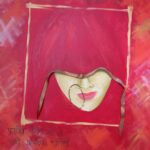“There is something wonderfully bold and liberating about saying yes to our entire imperfect and messy life.”
(Tara Brach)

It is a given that these days we are constantly inundated with stressors on a personal and global level. As tempting as it is to turn away from painful emotions, or to self-medicate or even to think of ways to constantly distract ourselves, this is also an opportunity to wake up, to revel in this human experience and to show up emotionally for each other.
You are probably thinking, that sounds both wonderful and crucial. But how do we do this?
I have written in an earlier post about how I practice R.A.I.N in my art to deal with difficult emotions. You will find the explanation of what R.A.I.N is here. Some of you who read it, asked for specific instructions and tools to understand the process better. And so, this is an attempt to address that.
Begin with trying to recognize all your emotions through a body scan. Pay attention to any emotional or physical sensations you are feeling. What art material could you use to express that feeling? Pick it up and begin drawing, painting, or sculpting that particular sensation and feeling. It might be abstract or a representation of something. Does your feeling have colour or is it black and white? What about its shape, texture, and size? Do follow your instinct and give the image time and space to take form. Take as long as you need. When the art feels like it has come to a natural stopping point, move on to the next step.
Place your art object at a little distance. If it’s a two- dimensional drawing or painting, lean it up against a wall. If it’s a three -dimensional piece, place it on a surface away from you. The idea here is to use the physical distance between you and what you are feeling. You are able to witness the feeling while also being with the feeling. How does it feel when you are far away from the art? Next, take a step closer. How does that feel? Move from side to side and also try standing directly in front of the image. Do you still notice the feeling inside as strongly or has the sensation lessened? There is no right or wrong here. Finally, can you hold the art piece? How does that feel in contrast to being further away from it? Place the art in a place that feels best and then move into the next step.

Remember, the idea is to investigate (not interrogate). Treat yourself with kindness in this step. While looking at your art, ask it questions. It might feel silly at the onset, but if you trust the process here, you could be surprised by your experience. These questions might emerge spontaneously. But if not, here are some ideas. Ask your art things like: what would you like to share with me today? What do you need to feel finished, or do you feel complete? How young or old is the part of me that created you? Do you feel appreciated, seen, and heard? Where would you like to live in my home at this moment? Imagine that you could shrink yourself into a tiny size and live in the art piece. Which part of the art piece would you dwell in and which part would you avoid? I suggest that you write down the questions and any answers that emerge during your dialogue with your art. The answers are coming from a deeper part of you. The art is the medium to help facilitate the dialogue with yourself.
As you interact with your art, you may automatically realize the best ways to nurture yourself. Taking time out of your day to create and reflect is in itself an act of self-nurturing. Sometimes a very clear answer might emerge. For example, you could feel inclined to take a hot bath, go on a walk outside, meditate, buy yourself some flowers or continue journaling. You might feel pulled to create more artwork. Keep the art in a visible place so that it serves as a daily reminder to nurture yourself.
It’s important to say that sometimes, you might feel too challenging to stay with a strong emotion. If you go through these steps and feel unsettled, it can be just as nurturing to tell your feeling “I know that you need my attention. I promise to return to you and do more self-discovery work in the near future. But for now, I’m taking a break.” Visualize yourself safely placing the emotion in a chest or box and closing the lid. Again, reminding the emotion that you will and can come back soon to spend more time with it.

Most of our healing takes place when we give form to our feelings rather than allowing it to remain in the shadows. Once an image has been created it creates possibilities to dialogue with the feeling, ask it what it needs, and then ‘feed’ the feeling with our attention and compassion. This is truly about feeding a part of the self that has been neglected. When the darkness inside is made conscious it cannot have power over us.

